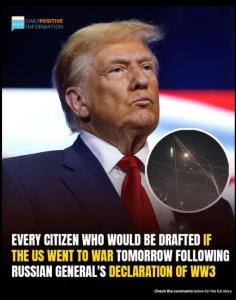
Who Could Be Drafted? Inside the U.S. Military Draft Rules in Case of Global War
With rising global tensions and renewed fears of large-scale conflict, many Americans are asking: Who could be drafted if the United States reinstated the military draft? Though the draft has not been active since 1973, the Selective Service System remains in place, ready to be activated by Congress and the president in the event of a national emergency.
At its core, the draft would primarily target U.S. male citizens and immigrants aged 18 to 25, who are required by law to register with the Selective Service. This includes natural-born citizens, naturalized citizens, undocumented immigrants, and refugees residing in the U.S. at the time of registration. Failing to register is a federal offense and can result in loss of federal student aid, government jobs, or citizenship benefits for immigrants.
If a draft were initiated, the process would follow a well-defined sequence. The Selective Service would conduct a national lottery based on birth dates, randomly determining the order in which eligible men would be called up. The youngest eligible men, typically those turning 20, would be called first, followed by 21-year-olds, 22-year-olds, and so on up to age 25.
Not everyone would serve, however. The system allows for deferments and exemptions. Historically, college students have been granted temporary deferments, though this has been controversial and could change depending on the circumstances of the conflict. Others who might qualify for deferments or exemptions include individuals with dependents, medical conditions, or conscientious objector status based on deeply held moral or religious beliefs against war.
In the event of a truly global war, the rules could expand. Some experts argue that women could be included in future drafts. In recent years, discussions in Congress and among military leaders have raised the possibility of requiring women to register for Selective Service, especially since combat roles are now open to women in the U.S. military. As of now, though, only men are required to register.
It’s important to note that reinstating the draft would be a drastic and politically charged decision. The U.S. maintains an all-volunteer military force of over a million active-duty personnel and hundreds of thousands of reservists and National Guard members. A draft would likely only be considered if those forces were insufficient to meet the demands of a large-scale, prolonged conflict.
If implemented, the draft would unfold quickly. The first draftees could be ordered to report within days or weeks of activation, sent for training before deployment. The system is designed to mobilize millions in stages, ensuring a continuous flow of personnel to the frontlines if needed.
While there is no active draft today, the infrastructure remains ready. The hope, of course, is that diplomacy and deterrence will prevent any situation where the draft must return — but in times of uncertainty, Americans are wise to understand how the system works.
